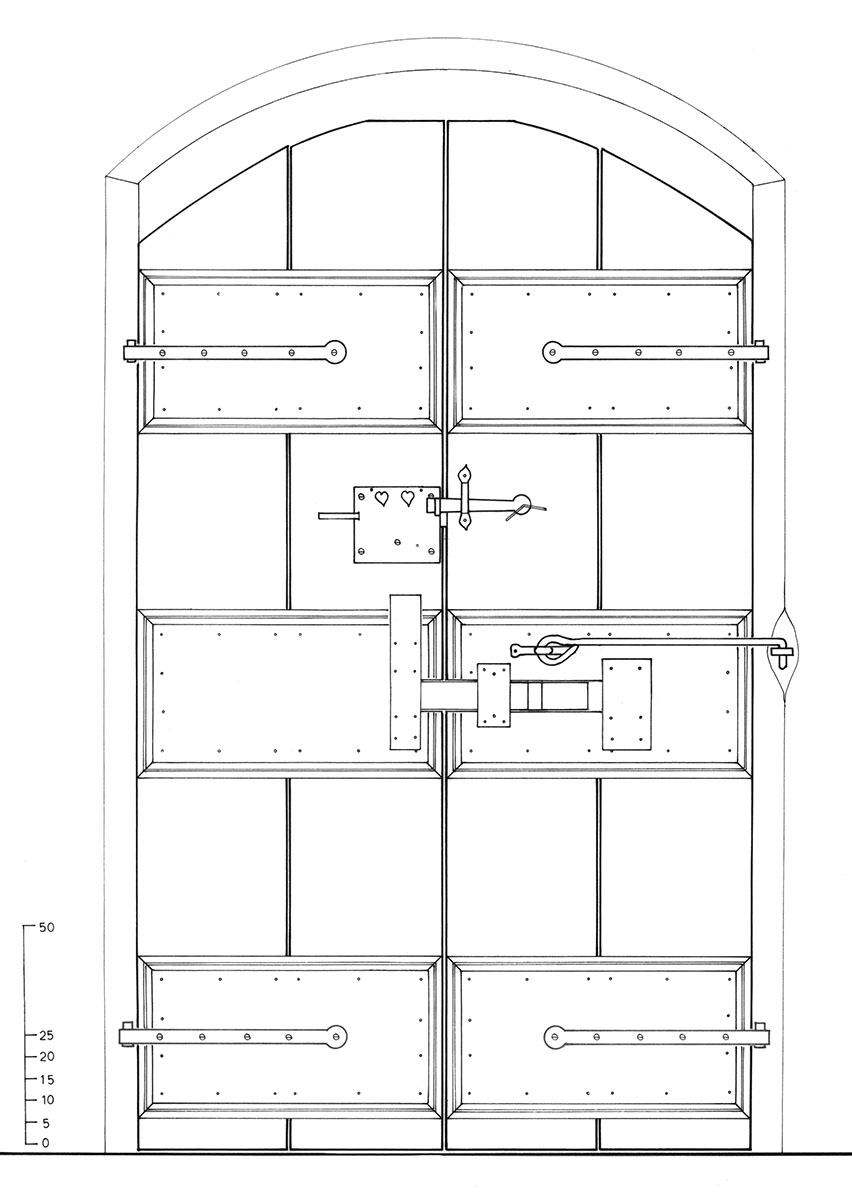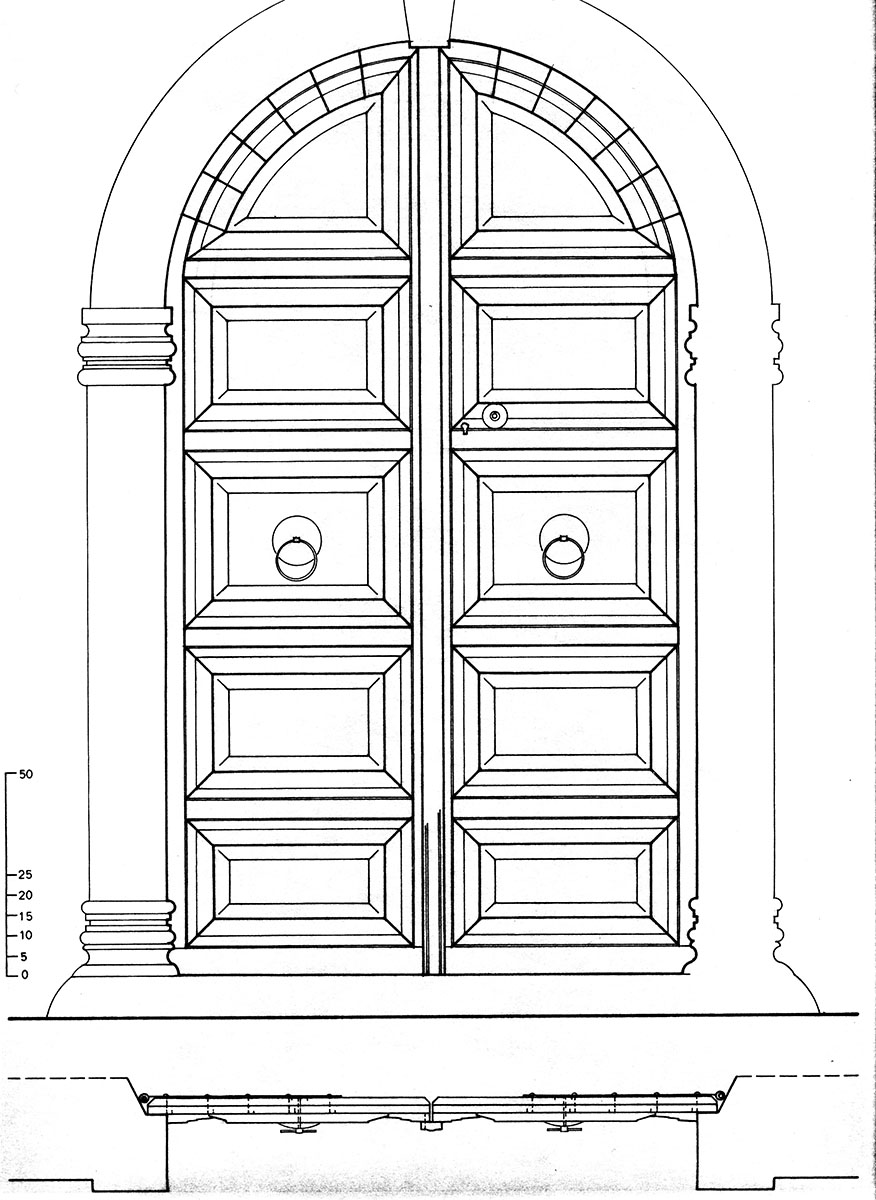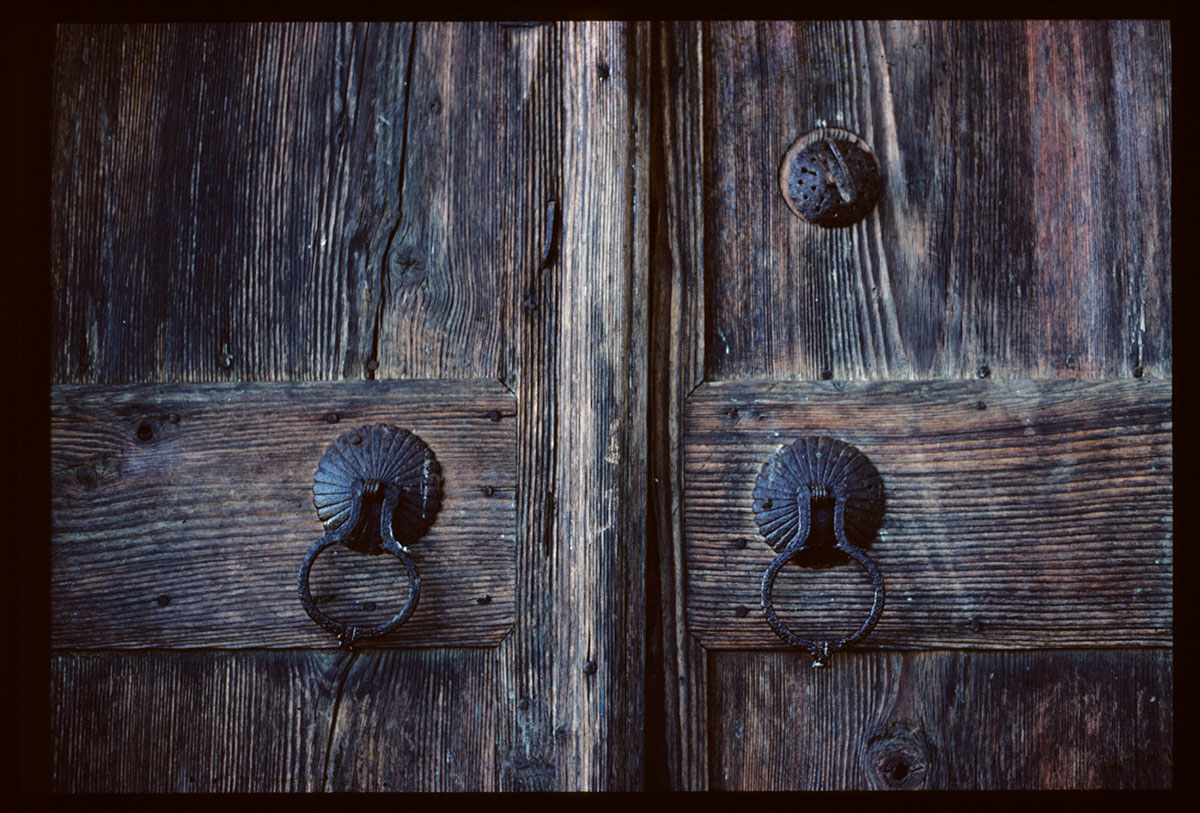Ironwork
Metal Fittings
Once the wooden window-frames are completed, the wooden bolt and metal fixtures are nailed to them. A brief list of these fixtures and their use is set out below; they will be described in more detail in the following chapter.
Metal door fittings
Support: The door is hung on strap hinges. These are placed before the door-frame has been completed, the pintles in the casing itself and the flange on the inner side of the door.
In order to hold open one of the leaves of a double door, the kondomiri strut is placed on the inside of the leaf.

Panelled yard door, inner face. Vori, Western Mesara.
Opening and shutting: The latch (zeberes) allows the door to be opened and shut without being locked. It is placed on the outside of the door and the latch mechanism passes through to the inside.
Handles and knockers: Rings (kerkelia) are placed on the outside of the door, one to each leaf, and are used as both handles and knockers.
Security: Locks are placed on the inside of the door and are connected to the outside via the keyhole. The lock mechanism is operated using a key.
In general, it should be noted that the lock and latch are placed on the inside of the opening leaf of the double door, while the strut is attached to the inside of the fixed leaf.
Rings for opening and knocking on the door are placed on the outside of both leaves. The inner part of the latch and the keyhole are placed on the opening leaf.
The fixtures of the outer door are the most elaborate.

Panelled yard door, outer face and horizontal section. Vori, Western Mesara.
It must be noted that all the lock components are metal. This type of lock is more elaborately made than any of the other types of lock discussed below, with wrought iron decoration.
In a development of the zeberes lock , the forked spring was replaced by a coiled spring whose straight section compressed the bolt. The system remained the same, being locked and unlocked using a key from the outside and by hand from the inside.
Later there was a significant change in the axis of movement of the beratis, from vertical to horizontal.
The bolt is now supported by two asfalies , one at each end of the bolt, allowing free horizontal movement.
The spring becomes more complex, an open ovoid in shape, with one fixed and one free end. The upper end of the spring is notched to engage the corresponding depressions in the upper edge of the beratis. The spring is placed immediately above the beratis, so that before the key touches the latter it pushes the spring up, freeing the beratis and allowing it to move either forwards, locking the door, or backwards unlocking it. The lock cannot now be operated from the inside. The lid of the lock is still elaborately and imaginatively decorated.
As the lock developed, according to the same principles, an inner bolt was added so the door could be secured from the inside. The lid of the lock was simplified until it became square, while the keyhole ceased to be ornamented and became a simple rectangular box.

